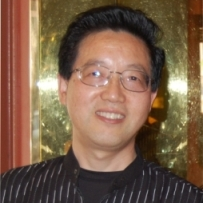Cancer Treatment and Drug Resistance
A special issue of Life (ISSN 2075-1729). This special issue belongs to the section "Pharmaceutical Science".
Deadline for manuscript submissions: closed (1 January 2023) | Viewed by 9164
Special Issue Editors
Interests: cancer biology; targeted cancer therapy; cell stress response; gene therapy; cancer genetics; pediatric cancer; cancer immunotherapy
Special Issues, Collections and Topics in MDPI journals
Interests: receptor tyrosine kinases; EGFR; signal transduction; cancer therapy; breast cancer treatment; targeted therapy
Special Issues, Collections and Topics in MDPI journals
Special Issue Information
Dear Colleagues,
The uncontrolled growth of cells inside a tissue can cause a group of diseases that are collectively called cancer. The six common properties of cancer cells as identified by Drs. Hanahan and Weinberg are “sustaining proliferative signaling, evading growth suppressors, resisting cell death, enabling replicative immortality, inducing angiogenesis, and activating invasion and metastasis”. Since the discovery of the disease, several treatment strategies have been introduced to cure or expand the lifespan of patients with cancer. Generally, cancer treatment strategies can be stratified into four types: 1) treatments based on the physical removal or destruction of tumor tissue (e.g., surgery, radiotherapy); 2) systemic chemotherapy which targets highly proliferative cells; 3) targeted therapy which targets survival factors of cancer cells; and 4) immunotherapy which boosts the patient’s immune system to fight against cancer. Treatment strategies are usually selected based on cancer type, patient age, and tumor stage. Although the cancer treatments have improved the survival rate of patients with cancer, some patients do not respond or become resistant to the treatments.
There are complex connections between cancer cells and various signaling pathways involved in cancer initiation, progression, and metastasis. Our limited knowledge about these signaling pathways is a hurdle to the design of efficient treatment strategies to cure cancer patients or overcome drug resistance. Therefore, identifying the key components of such signaling pathways would help us to increase the efficiency of current treatments, design novel therapies, and ultimately reduce the cancer-related mortality.
This Special Issue will cover the recent progress in all areas related to cancer treatment and drug resistance.
Dr. Hamid Maadi
Prof. Dr. Zhixiang Wang
Dr. Yaghub Pazhang
Guest Editors
Manuscript Submission Information
Manuscripts should be submitted online at www.mdpi.com by registering and logging in to this website. Once you are registered, click here to go to the submission form. Manuscripts can be submitted until the deadline. All submissions that pass pre-check are peer-reviewed. Accepted papers will be published continuously in the journal (as soon as accepted) and will be listed together on the special issue website. Research articles, review articles as well as short communications are invited. For planned papers, a title and short abstract (about 100 words) can be sent to the Editorial Office for announcement on this website.
Submitted manuscripts should not have been published previously, nor be under consideration for publication elsewhere (except conference proceedings papers). All manuscripts are thoroughly refereed through a single-blind peer-review process. A guide for authors and other relevant information for submission of manuscripts is available on the Instructions for Authors page. Life is an international peer-reviewed open access monthly journal published by MDPI.
Please visit the Instructions for Authors page before submitting a manuscript. The Article Processing Charge (APC) for publication in this open access journal is 2600 CHF (Swiss Francs). Submitted papers should be well formatted and use good English. Authors may use MDPI's English editing service prior to publication or during author revisions.
Keywords
- cancer treatment
- drug resistance
- cancer cell signaling
- metastasis
- apoptosis
- cell cycle
- novel therapies








